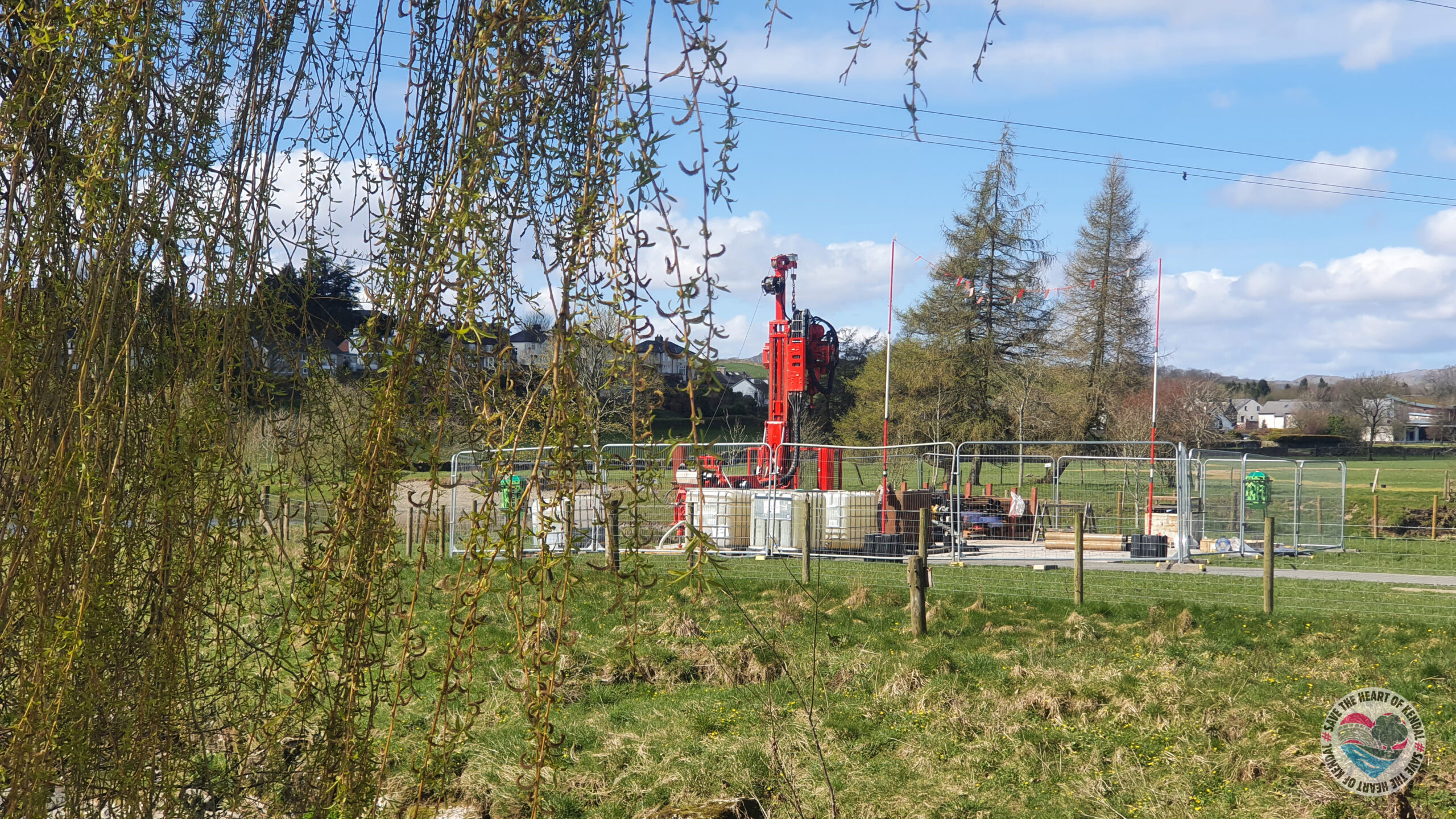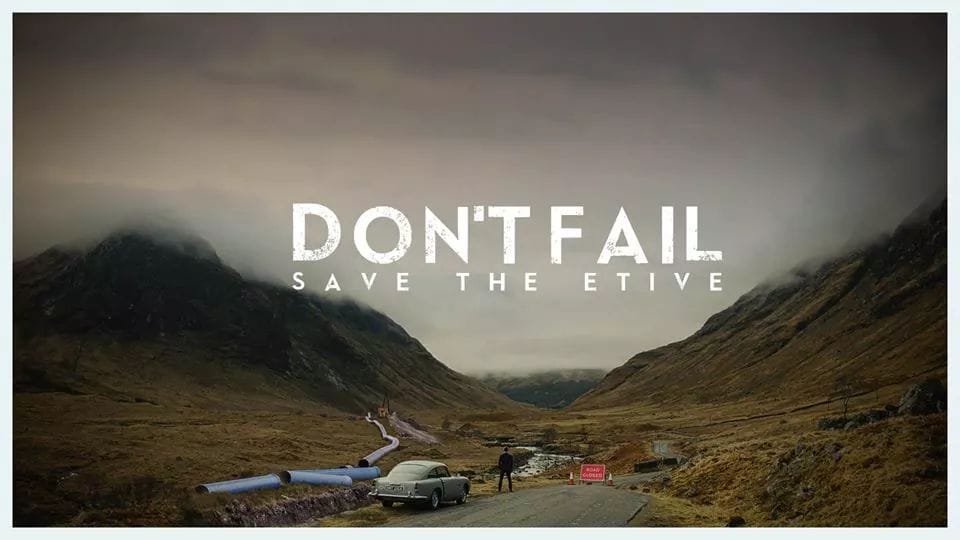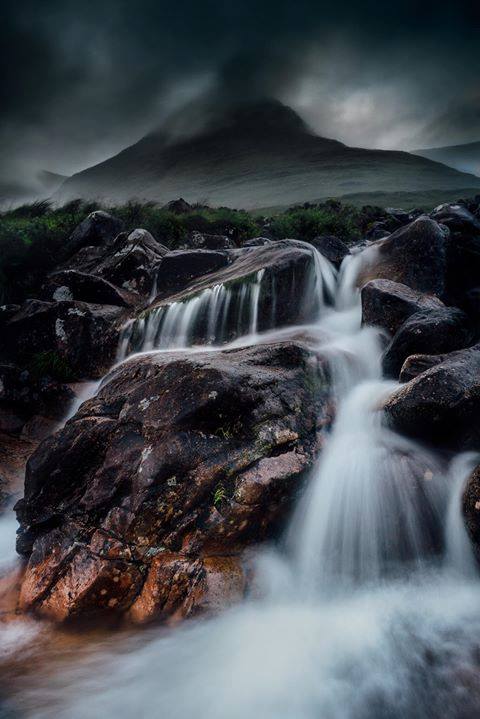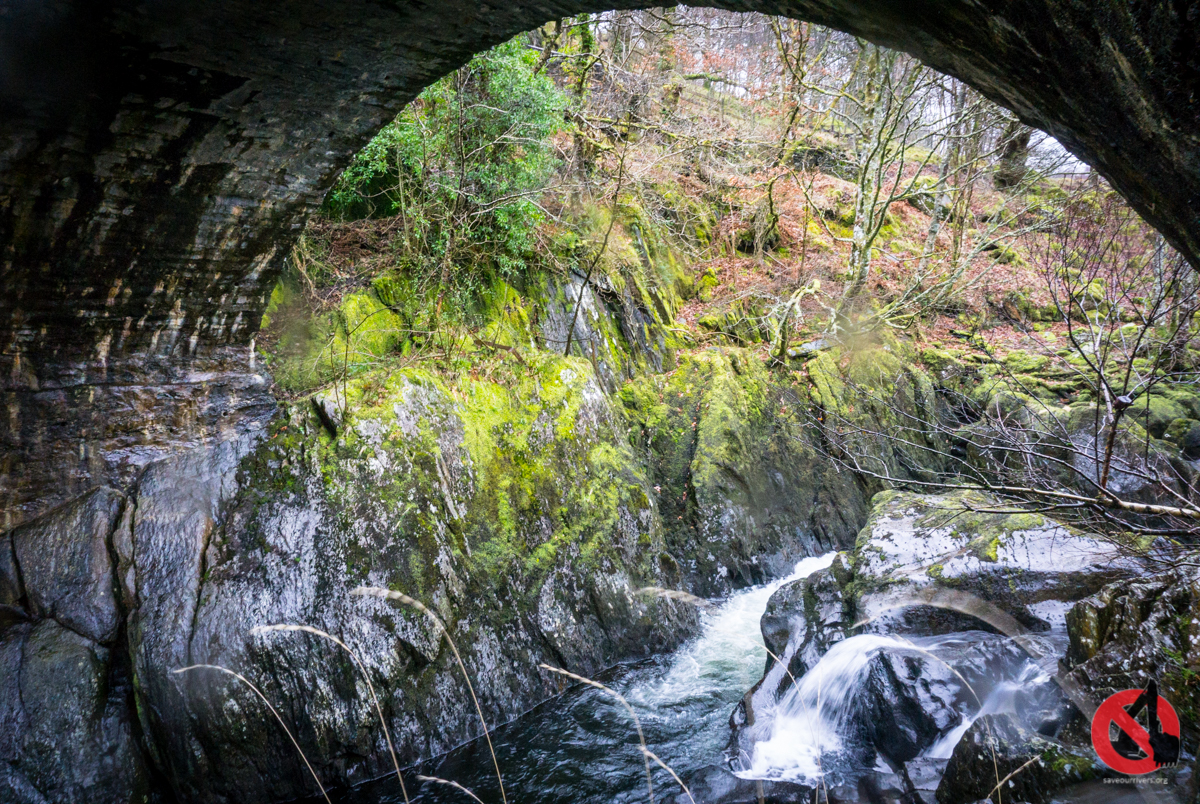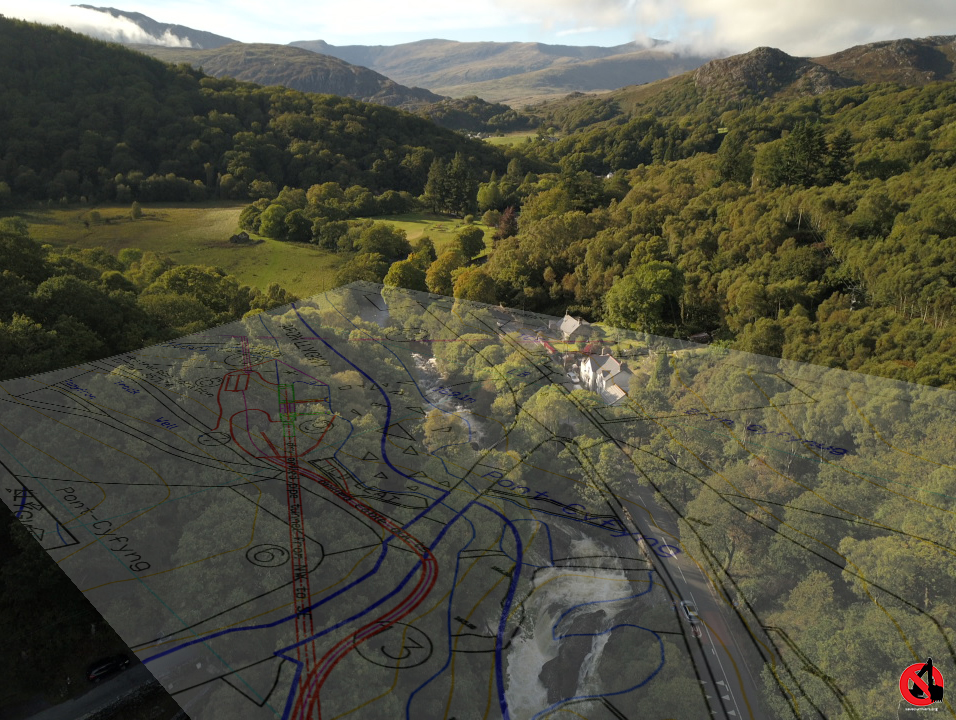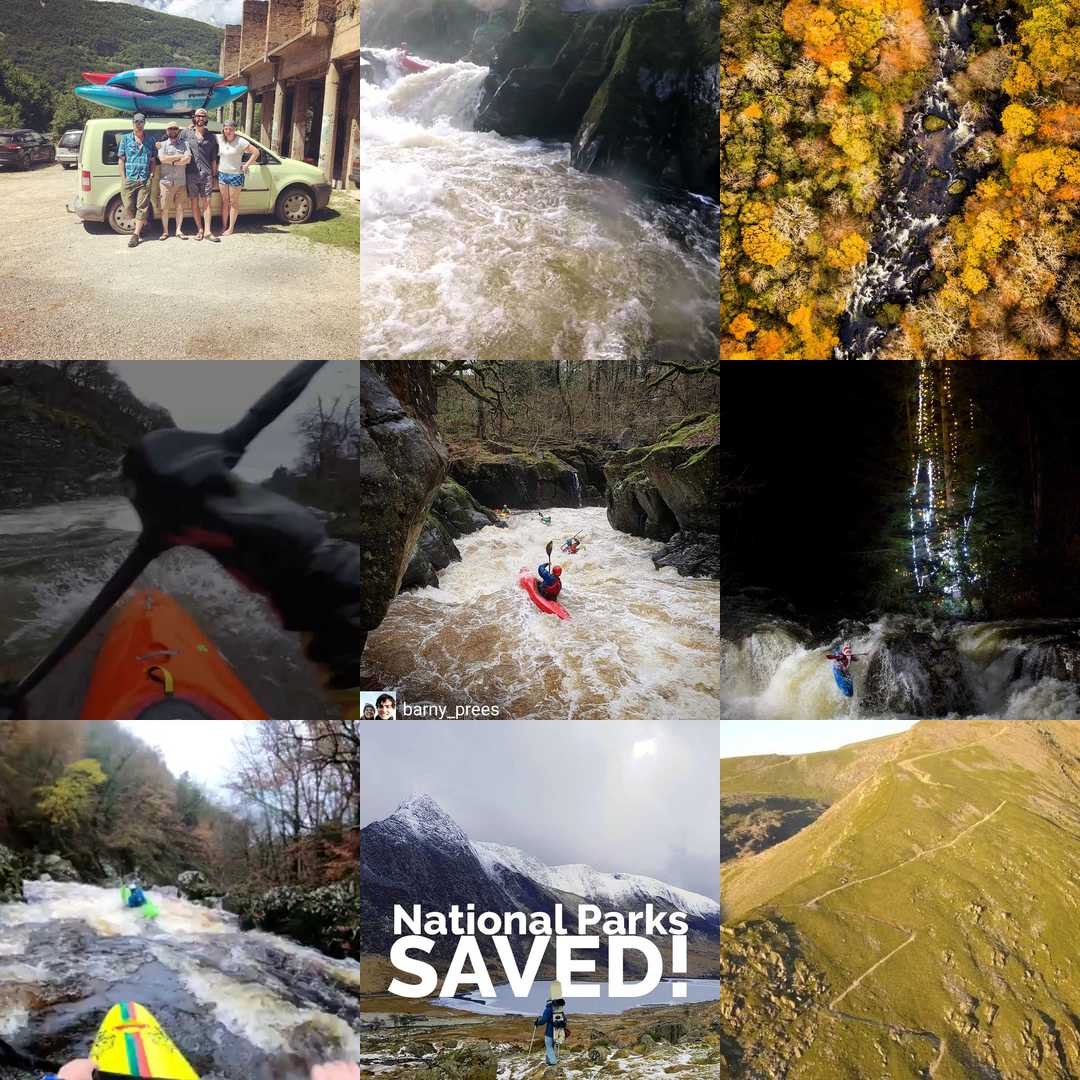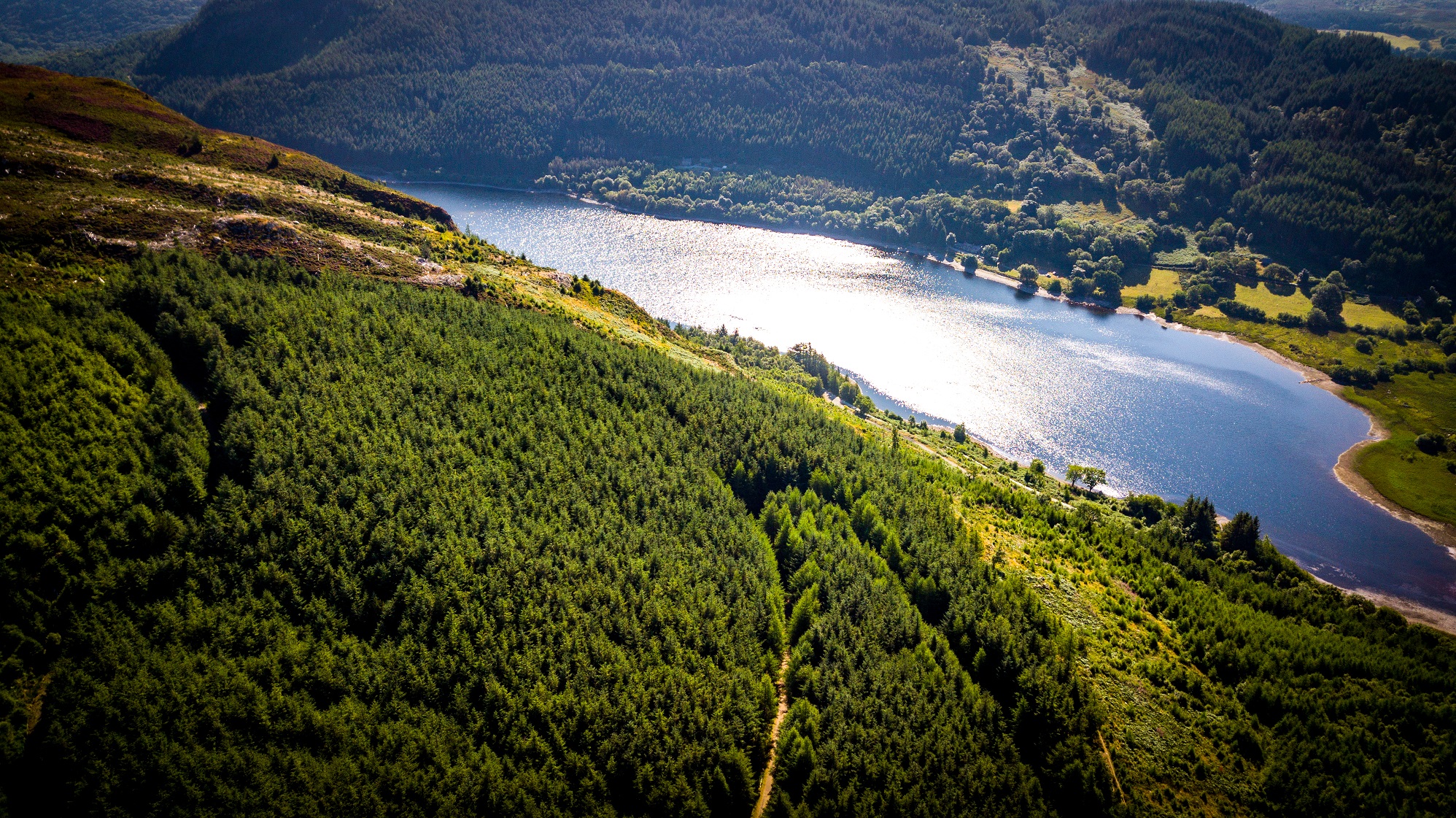The River Kent flows through the heart of the town of Kendal and has the highest level of protection afforded to a river in Britain, being both a Site of Special Scientific Interest and a Special Area of Conservation. It is also just outside of the Lake District National Park, and is often billed as the “Gateway to the Southern Lakes”. A number of features that the river Kent has been designated for are likely to be impacted by Kendal Flood Risk Management Scheme.
14th April 2021 — Comments are off for this post.
Kendal Flood Risk Management Scheme – Overview
19th March 2019 — Comments are off for this post.
Save Glen Etive Petition presented to the Highland Council
Ahead of their meeting, the highland council, Save Glen Etive and Save Our Rivers have have presented a petition signed by 11,848 people. We are grateful to Sandra Halliday for taking the lead on this.
Dear Councillors
This petition is raised in objection to the following planning applications:
REF 18/02742/FUL – Allt a’ Chaorainn
REF 18/05440/FUL – Allt Mheuran
REF 18/02739/FUL – Allt Ceitlein
The applications for these 3 hydro schemes were controversial from the start and attracted hundreds of objections through the planning process. However, as is often the case, the plans for Glen Etive only reached wide spread attention once the planning process had closed. The initial acceptance of the applications and subsequent media coverage has led many to feel concern for the future of this iconic Glen.
The reassessment of this decision by the full council is a welcome step and with the official planning process closed to comments this petition has been raised as a vehicle for those concerned to have a voice.
Objections to the hydro schemes covered many areas of concern including but not limited to; the importance of keeping areas recognised as Wild Land by SNH free from intrusive development, the risk to both upland and riverine habitats caused by this type of infrastructure and the impact on recreation caused by the physical effects on both the rivers and the wider landscape.
The common thread through all objections is this;
The ecological and landscape value of Glen Etive as it stands, far outweighs the limited level of renewable energy set to be produced by these schemes.
We the undersigned hope that the Highland Council considers the views of so many both resident to the Highlands and visitors to the area from across the UK in its decision.
Yours Faithfully
Sandra Halliday, Save Our Rivers & Save Glen Etive
And 11,848 like minded people.
26th February 2019 — Comments are off for this post.
Save Glen Etive – A final chance to halt the hydro
Last week all 7 hydro schemes in Glen Etive were approved for planning permission. There's a final chance to stop these schemes, thanks to a motion tabled by Cllr Andrew Baxter.
To be allowed to take part, these Highland Councillors need to get involved in the process immediately. We've written an email to send to them, or you can write your own. We've compiled a list of the councilors to send them to.
Highland Council - Email Contact List
Dear Councillor
As a regular visitor / resident of the Highlands, I urge you to take action to preserve the Wild Land of Glen Etive. 3 of the 7 proposed hydro schemes planned for this glen are to be situated within its wild eastern flank they risk degrading the very thing that makes the Highlands special. The many concerns around the environmental impact of these schemes, the technical issues with their construction and the insignificant amount of power produced have all been heard and ignored by the planning department. Our hope is that you will consider these schemes in the wider context.
Development of wild land makes a mockery of this new and much needed designation. The construction of several HEPs in this landscape by an absentee landlord allows the creation of wealth for the few at expense of the wider community that benefit from Scotland’s breath-taking landscapes. It would be hoped that those who strive for an environmentally conscious Scotland, proud of it’s landscapes and progressive in it’s policies would act to protect such an iconic glen.
Please show your support for the by engaging in the upcoming review of the planning decisions.
Yours Sincerely,
11th February 2019 — Comments are off for this post.
Act now to Save Pont Cyfyng
Save Our Rivers would like to thank the Capel Curig Community for inviting them to speak alongside the developer in discussion of the proposed Llugwy HEP project.
Having listened to both the developer’s description of the scheme, along with the comments from members of the community Save Our Rivers has decided it will be officially objecting to the planning application.
During the meeting the developer talked extensively of how in the future the community may be allowed to purchase some share in the project, or how they could change the way the construction is carried out, or how the turbine may not be taking water for as long as described in the abstraction application. However; what we must remember is that these are simply words with no guarantees, what is important is what has actually been applied for, and that is this:
A private company has applied to remove, through a 2m by 15m metal grill, 4.2 Cumecs of water above a tiny compensation flow from Pont Cyfyng Falls (this will be nearly 70% of the flow for around 70% of the year). To pass this water through a 2m diameter 100m long tunnel (it will bore over a series of months) to a pipe line and turbine house built in a patch of Ancient Semi Natural Woodland (requiring the felling of 1/3 of the trees on site). Using a historic bridge and small unclassified road as it’s main route of access. All this to provide, when running at full power, enough electricity to run 40 electric showers.
You can see the full application here.
Save Our Rivers main points of objection are listed below:
Impact on Ancient Woodland
The arboricultural report lists 87 trees in the vicinity of the development, 31 are listed to be felled, over a third. Some of these trees are suffering from Ash die back, but many are not (because they aren’t Ash trees), in any case Ash die back would not have the impact of removing all the trees in a single event.
Ancient woodland and semi-natural woodlands and individual ancient, veteran and heritage trees are irreplaceable natural resources, and have significant landscape, biodiversity and cultural value. Such trees and woodlands should be afforded protection from development which would result in their loss or deterioration unless there are significant and clearly defined public benefits; this protection should prevent potentially damaging operations and their unnecessary loss.
Planning Policy Wales ed 10 6.4.26
Ecological impact
The ecological impact of the “depleted reach” on the bryophyte assemblages and other flora and fauna of this section is not to be underestimated. The ecological survey presented by the developer states:
The river at the time of the survey was in full spate and it was considered too dangerous to undertake a full in:stream survey. Therefore, the survey was confined to the immediate right bank of the river only where it was accessible. One must bear in mind also that only a very small proportion of this large river will be abstracted so it is considered that any potential impact on the in stream ecology is likely to be extremely modest.
However the abstraction regime applied for is 70% over Q95 up to a maximum of 4.2 Cumecs (which will be reached at around Q22. The abstraction is for most of the river to be abstracted for most of the time. The ecological report is therefore both inadequate and based on an incorrect premise.
SNPA must ensure that adequate assessment of possible biodiversity impacts have been made. The poor quality of the developers ecological assessment makes this impossible
The S6 duty requires that public authorities must seek to maintain and enhance biodiversity so far as consistent with the proper exercise of their functions and in so doing promote the resilience of ecosystems.
Environment (Wales) Act 2016 Section 6 – Biodiversity and resilience of ecosystems duty
Visual impact of the development
Visual impact of the development falls into 2 main areas:
- Impact of the built structures into a wild and dramatic section of waterfalls. The presence of the 2m by 15m intake grill, turbine house, metering house and tunnel / pipeline will be considerable. All will be visible from the A5, a viewpoint lay-by and by the popular footpaths both to Moel Siabod and along the right bank of the Afon Llugwy. Consideration of the visual impact in terms of artist impressions or photomontages are entirely absent from the application.
- Impact of the abstraction on the visual and aural amenity of the falls. The abstraction regime applied for would see nearly 70% of the water being diverted around the falls in all but the lowest 5% of flows and the highest 20%. There is no visual assessment of this in the planning application, but it will certainly be considerable.
This acts against the 2 core purposes of the national park:
To conserve and enhance the natural beauty, wildlife and cultural heritage; and
To promote opportunities for the understanding and enjoyment of the special qualities of the (National) Park by the public.
Inadequacy of the application to asses the impact of construction
There are multiple inadequacies in the application with regards the using of the A5, historic bridge and unclassified road as the main routes of access for the construction. These include but are not limited to; no information as to how the footpaths to both Moel Siabod and along the Afon Llugwy (directly impacted by the development) will be affected, a lack of swept path analysis of roads for the delivery and construction vehicles required, no detailed plans of new gateways/access points required and no arboricultural report of any trees that may be required to be removed or cut back to facilitate access along the unclassified road. Many of these points are raised in the response by Welsh Highways.
One further concern is the description in the CMS of the use of a front-loading dumper for transportation of excavated material. The construction will require the dumper to operate around 2 popular rights of way and a row of houses close to the unclassified road. Front loading dumpers have been responsible for 6 deaths in the last 6 month period in the UK and there is no indication in the CMS of how health and safety concerns regarding this will be dealt with.
If you wish to object to the development download this template letter, fill it in with your own views or use ours for guidance. Then email it to cynllunio@eryri-npa.gov.uk .
Update 13th Feb 2019
See our full objection letter here: Pont Cyfyng objection
Our objections summary:
I am sure the SNPA will make the correct decision and refuse permission for the obviously unsuitable and poorly presented development. One must consider why such a poor-quality application has been submitted. Recent planning decisions, such as the initial recommendation for approval of the Conwy Falls HEP, the permissions in retrospect for the appalling Afon Las HEP or the granting of permission for yet another barrier to migrating Salmon on the Afon Colwyn may be a contributor. With lax permitting and lax oversight of hydro developments and with no consequences for breach of planning conditions it is no surprise that developers feel Snowdonia has become somewhat of a free for all when it comes to hydro development.

5th February 2019 — Comments are off for this post.
Pont Cyfyng Hydro on the Afon Llugwy
A planning application has been submitted for the hydro electric development of Pont Cyfyng Falls on the Afon Llugwy in Capel Curig Snowdonia. This is likely to be the largest scale and possibly most damaging HEP applied for in Snowdonia since the plans to dam the Afon Conwy were rejected in 2016.
The application is deliberately vague and misleading in many aspects, but this is what we know so far:
The location
The development is based in a National Park, will sit in an area of woodland registered as ASNW (Ancient Semi Natural Woodland) and lies shortly upstream of a SSSI. The site sits in the heart of Capel Curig village, a hotspot for outdoor tourism containing numerous pubs, cafes, hostels and the National Mountain Training Centre at Plas y Brenin. Capel Curig is popular for the beautiful free flowing Afon Llugwy and as the access to rugged peak of Moel Siabod.

The proposal
The plan is to divert a large proportion of the river into a new channel, pass it through a 2m diameter 100m long tunnel dug by a 10-ton tunnel borer under the historic Telford road bridge. Then through a large diameter pipe to the turbine house to be built downstream on river right, between the second and third falls, where the outflow will fall into a newly excavated "plunge pool".
Many of the impacts of the scheme are un-quantifiable due to the poor quality of information provided in the application. There is no assessment of traffic impacts, effects on the footpath along the river, the timescale of construction or the size and location of construction compounds. Here is what we can work out.
Impact on Ancient Woodland
The Arboricultural report lists 87 trees in the vicinity of the development, 31 are listed to be felled, over a third. Some of these trees are suffering from Ash die back, but many are not (because they aren’t Ash trees), in any case Ash die back would not have the impact of removing all the trees in a single event.
Amount of water to be removed
The HEP will remove 70% of the river above a tiny compensation flow, up to a maximum of 4.2m3/s (this will occur when the flow of the river reaches 6 m3/s). Using flow data from CEH (Centre for Ecology and Hydrology) we can therefore calculate that 70% of the flow will be diverted around the falls for over 75% of the year, and over 85% of the time during the summer months.
This will have 2 major impacts, firstly the dewatering of Pont Cyfyng will have a profound effect of the beauty of the falls, a major tourist draw; visible from the A5, a view point layby and the popular footpath up Moel Siabod. Secondly the ecological impact of this “depleted reach” on the bryophyte assemblages and other flora and fauna of this section is not to be underestimated. The ecological survey presented by the developer states:
One must bear in mind also that only a very small proportion of this large river will be abstracted so it is considered that any potential impact on the in stream ecology is likely to be extremely modest.
It can be seen from the calculations above this is simply not true. The abstraction is for the vast majority of the river to be abstracted for the vast majority of the time.

Impact of built structures on the landscape
The inlet structure to be situated on the river right bank above the falls will be huge. A 2m by 15m metal grill in full view of river users, walkers on the footpath along the river and travellers on the A5 and Telford bridge. The turbine house will be situated on the wild river bank between the second and third fall, visible from the A5 the Telford bridge and the viewpoint layby. Neither structure has a photomontage, artist impression or even detailed plan drawing to show how it will fit into the landscape.
The photo below shows the shear scale of this development compared to the site:

How much power will be produced?
The power produced is very limited compared to modern renewable production, this is one of the reasons the FIT payment subsidy this scheme will rely on to be profitable is being cancelled this year. The installed capacity of the scheme is around 400KW, roughly 1/10th of a single wind turbine of the type installed off Llandudno, or 1/20th of the new generation of one of the new wind turbines at Burbo Bank Liverpool. Whilst the application boasts that power produced will be:
the equivalent required to supply 21% of the homes and businesses per year with electricity in Betws y Coed and Capel Curig, or 71% of those in Capel Curig only.
It is important to look at this more closely, the population of Capel Curig is 226 permanent residents. However the 400kw produced during the 25% of the year the scheme reaches full power is only enough for 40 people to take a shower.
Save Our Rivers believes the scale of this scheme and the impact it will have on the Afon Llugwy and its surrounding Ancient Woodland. Along with the social and economic impact it will have on the tourism dependant community of Capel Curig is disproportional to the extremely limited impact it will have on combating climate change.
On a more basic level Save Our Rivers believes the free flowing rivers and falls of our National Park are worth far more in their natural state than when diverted and dammed to make kilowatts and pounds.
We urge everyone to attend the public meeting on Friday 8th Feb at 7.00pm Capel Curig Community Centre and raise their concerns with the developer there.
Details on how to respond to the planning application will provided when we have more information.

The proposed inlet and defunct leat, including the ancient woodland adjactent to the Afon Llugwy.
3rd January 2019 — Comments are off for this post.
2018
2018 has been another great year at Save Our Rivers, here are some of our highlights:
National Parks Saved

In 2017 we ran our huge National Parks Matter campaign against Welsh Government plans to remove the main environmental protection governing our National Parks. Following widespread opposition from across the conservation sector these plans were finally dropped in March of this year with an announcement from the new Environment Minister.
Save the Blue Heart

In the spring we supported Patagonia's Save the Blue Heart campaign against over 2700 dams planned for the Balkan Peninsular. Touring with the Blue Heart film around the UK and Ireland giving talks and answering questions about this unfolding environmental tragedy. The campaign resulted in the hand over of a petition with 120,000 signatures to the European Bank for Reconstruction and Development. The largest petition ever received by the bank on an environmental matter.
The National Trust plans new dams in the Ogwen Valley.

Once again we found ourselves campaigning against the National Trust's plans for new dams in the free flowing streams of the Ogwen Valley SAC (Special Area of Conservation), Snowdonia National Park. This time on the Afon Bodesi. This Autumn we learned that the National Trust have not only dropped the plans for the Afon Bodesi but for all their planned Ogwen Valley Hydros.
Hydro Schemes without Planning Permission

Welsh Government plans to allow small scale hydro to be built without planning permission saw us asking our followers to respond to an NRW consultation. The overwhelming number of responses in favour of keeping full planning requirements for all hydro schemes meant that these plans have been dropped for now.
BRT3
The Autumn saw us headed out to support our friends at Balkan River Defence on the Balkan River Tour 3 , with street actions in Podgorica and river actions on the Tara it was an action packed and inspiring trip. Can you make it next year for Balkan River Tour 4 and do your bit to keep the pristine rivers of the Balkan Peninsular flowing free?
Free Rivers Fund

This year Free Rivers Fund has gone from strength to strength with more money granted to more projects from more countries than ever before. Save Our Rivers were stoked to be able to represent Free Rivers Fund this year at Tryweryn Fest, Kayak Fest Tara and on the paddlesports stage at Kendal Mountain Film Festival.
Keeping the Rivers of Snowdonia Flowing Free

A huge part of our work is to respond to the almost constant planning applications for new hydro schemes on the rivers and streams of Snowdonia. Some great news is that one of the most damaging proposals for a 600kw scheme on the Afon Cynfal has just be rejected by the planning department.
Side Projects

Save Our Rivers has been getting it's teeth stuck into some cool side projects as well. Tom has become a key player in the new Trash Free Trails and Dan has joined forces with Surfers Against Sewage Anglesey to work towards the Plastic Free Anglesey community status.
Adventure
It hasn't just been campaigning work this year; Save Our Rivers has skied French glaciers, Canadian tree runs and Argentinian couloirs. We have multi-day hiked in the Alps, paddled the deepest canyons on Earth in Peru, kayaked down the pristine rivers of the Balkan Peninsular and spent every other spare minute biking, climbing, skiing and kayaking in the place we call home; Snowdonia National Park. Oh yeah and we somehow held down our day jobs and managed not to get divorced in the process.
If just 2 guys (and their friends) with a passion for outdoor sports and the wild places it takes them can do all this in 2018 , imagine what we could all do together in 2019.
Massive thanks to Patagonia , NRS and Radical Rider for helping us on our campaigns and our adventures. Plus a big shout out to our comrades in arms Snowdonia Society , The Rivers Trust and Balkans River Tour.
12th November 2018 — Comments are off for this post.
Large Scale Hydro – Unsustainable
Dan Wilkinson adds his take on large scale hydro schemes.
At the moment within the kayaking community there is a real rush to travel to iconic destinations in order to undertake last-chance descents of classic rivers (I’m off to Nepal to hopefully paddle the Humla Karnali in a couple of weeks, several members of Save Our Rivers have recently been to the Zambezi and Peru, and Eric Jackson and family have flown to Uganda to undertake the last descent of the White Nile before it vanishes underwater). This rush has been bough on by the increasing construction rates of large-scale hydropower schemes in all the corners of the Earth.
The day after the flooding started on the White Nile, destroying the last of the world class waves, whitewater and multiple local businesses, there appeared an article on the BBC News Website (Here) reporting on a peer reviewed paper (Here) damning the unsustainability of current common practices in large scale hydro-power constructions. This is not fresh news. In 1992 the National Research Council in the Unites States recognised that there was an ‘impairment of valuable environmental functions and amenities important to humans’ through the construction of hydropower projects, and supported the restoration of aquatic ecosystems (Here).

Large scale hydropower dams have been constructed in multiple places in Africa, Aisa and South America (Mekong River Basin, Amazon River Basin & Congo River Basin) and ALL have resulted in the same problems: Disrupted river ecology(Here), deforestation (Here), loss of biodiversity (Here), release of greenhouse gases (Here & Here), displacement of people and their livelihood and the downstream effects of blocking the flow of water (Here) have all been directly linked to dam construction.

The authors of the paper suggest several ways to transform hydropower and increase the sustainability these projects:
- Environmental impact assessments (EIAs) and social impact assessments (SIAs) need to be capable of stopping a dam from being built.
- EIAs and SIAs must be carried out by firms serving citizens rather than the dam builders, and they are essentials tools worldwide, whether in Brazil or Europe.
- Hydropower designs need to truly allow fish passage and mimic the seasonal river flows.
- Better governance needs to be created around dams.
- Greater transparency with society about the true costs and benefits (including social, cultural, economic, political, and environmental costs and the costs of dam removal at the end of the dam lifespan) is needed.
- Sustainability evaluation measures from the design through operation stage should be used. (vii) Innovative technologies that do not require damming the river or resettling population are needed. Addressing these issues can transform the hydropower sector.
Thanks to Emily Ward for her photos from the last days of another lost section of wild river in Uganda.
11th November 2018 — Comments are off for this post.
Tales from Wild Europe – Bethesda – Weds 19th Decemeber
Once again we are teaming up with the Snowdonia Society for another evening of talks and films about the places we love and the people who protect them.
The National Parks and wild spaces of Europe have never been under greater threat, nor have they been more needed.
Hear the stories of two people who fight to protect them. Learn the similarities and differences in their separate struggles.
Where: Neuadd Ogwen, Bethesda (map)
When: Wednesday 19th December - Doors at 7pm, starting at 7.30pm
How Much: Entry is free, but there will be a raffle and a bar both stocked with treats from local companies and our friends. Bring some change!
All the Updates: Facebook Event

John Harold is the Director of the Cymdeithas Eryri Snowdonia Society and a leading figure in the protection of Wales's largest National Park, Eryri.

Vera Knook is a Dutch Hydraulic Engineer who has taken her skills to the Balkan Peninsula. There she campaigns to protect its free-flowing rivers and pristine wild spaces as the Education and Research Lead for Balkan River Defence.

Don't miss out on the Welsh premier of the new Save Our Rivers film 'National Parks Matter'.
5th September 2018 — Comments are off for this post.
Help stop hydro without the need for planning permission
At the start of the summer the Welsh Assembly Government (WAG), launched a consultation on proposals to allow Permitted Development Rights PDR for “small scale, low risk hydro schemes”. I.e allowing some hydro schemes to be built without the need for planning permission (including within National Parks and AONBs).
You can read more about our concerns with the building of small scale hydro schemes in designated areas here: link
As ever when the Welsh Government is trying to dilute the environmental legislation this consultation is tucked away and hidden from sight. You may remember that last year AMs were asked to vote on proposed changes to National Park legislation based on a draft report that they had not yet seen.
The proposed changes are buried in a consultation document innocuously called
“Consolidation of the Town and Country Planning (Use Classes) Order 1987 and Town and Country Planning (General Permitted Development) Order 1995”
To give an idea of how well buried, the first part of the consultation deals with whether beauty salons should require the same type of planning as hairdressers.
The allowing of some hydro schemes to be built without planning permission in National Parks starts on page 49 (the last pages).

We have 3 main concerns with the proposals and the report they are based on.
- The proposals show a complete lack of understanding of the connectivity of river systems and how a small scheme built in one section of a catchment can have impacts on the ecology and geomorphology of the same river system further up or downstream. In the same vein it disregards any concerns over the accumulative impact of multiple small schemes within the same catchment.
- The report was written by Dulas Ltd. A renewables company based in Wales that has a direct financial interest in the granting of PDR for small scale hydro schemes (see our consultation response for full details).
- The report does not adequately state what “small scale” and “low risk” actually mean. There is no definition based on installed capacity or water abstracted meaning that no proper judgement can be made.
It is vital that the Welsh Government sees that it cannot hide important proposals that affect our environment from the those who care for it’s future and it is critical that if hydro schemes are still to be built in our rivers and streams that they are properly assessed through the panning process.
The consultation can be found here:
https://beta.gov.wales/subordinate-legislation-consolidation-and-review
The Dulas report it is based on here:
Our full response is here:
PDR-for-small-hydro-campaignTo act download our consultation response above, add your name address and organisation at the top and email to:
planconsultations-i@gov.wales
Feel free to edit our response to include your concerns or write your own. You have until the 28th of September to respond.
5th September 2018 — Comments are off for this post.
Why we oppose micro-hydro in designated areas
Save Our Rivers is opposed to the development of wild and free flowing streams and rivers for hydro power, especially those that sit within designated areas. We believe that the minute amounts of power produced by micro hydro does not compensate for the environmental damage that they cause.
Much of the damage caused by this type of scheme can occur during the construction phase. Very restrictive Construction Management Statements (CMS) are written to gain the understandably strict planning controls for designated sites. These are either impossible to stick to — due to the reality of working on a wild hillside — or are deliberately ignored to cut costs. In Snowdonia we have seen access tracks being built when materials were meant to be delivered by helicopter, rivers and lakes damaged by silt pollution from heavy machinery driving through streams, and protected trees felled.

Bat roosts blocked with foam.
https://saveourrivers.org/wordpress/enough-is-enough/
Once schemes become operational, the impacts persist. Although most micro hydros are not built on migratory fish rivers, the in-river barriers trap sediment, starving spawning beds down steam. The de-watered sections of streams are found to be lower in biodiversity and invertebrate life than above the dams. Amazingly there are no good studies about the ecological impact of micro hydro in the UK, so we have to turn to Europe for a relevant one:
https://bankwatch.org/wp-content/uploads/2017/12/ecological-integrity-hydropower-Macedonia.pdf
Most worryingly of all there is no research, or consideration by regulators, of the impact of multiple schemes within the same catchment: the Llanberis pass now has a hydro scheme on every one of its streams.

Silt run-off causing pollution to the Nant Peris and Llyn Padarn.
How much power do they make:
The power produced by micro hydro in the National Park is tiny. The combined installed capacity of the 90 most recently built HEPs amounts to 6.43MW; this amounts to less than one offshore wind-turbine.
https://orsted.co.uk/en/Generating-energy/Offshore-wind/Our-wind-farms
Most micro hydro schemes have an installed capacity of under 100Kw, enough power for 10 people to have a shower, or 50 people to make a cup of tea. It is around 1/100th of one new generation offshore wind turbine or the equivalent power of putting solar panels on 50 houses (assuming a standard domestic install of 4KW and a capacity factor of 10-20%).
How much will the power cost:
The power produced by sub 100kw schemes is some of the most expensive renewable energy available. It would cost around 13p/KWH, more expensive than the controversially high price agreed for new nuclear and over twice the price of new offshore wind.
https://www.ofgem.gov.uk/environmental-programmes/fit/fit-tariff-rates

FIT payments:
Designed with the best of intentions, FIT payments were meant to allow domestic and community schemes to produce power for use at location and sell any excess to the grid for an export fee. However, the scheme has been exploited by large landowners — like the National Trust — and even multinational power companies — like RWE. These developers use no power at site and export it all to the grid. Schemes are often downrated: producing less power than would be possible, so as to maximise profit (as smaller schemes generate bigger payments). The result has been a proliferation of tiny schemes, producing insignificant amounts of power, using now outmoded generation techniques.
FIT payments have become a burden on consumers, producing the most expensive electricity on the grid, and have achieved no meaningful progress towards reducing C02. As a result they are being cancelled as of April 2019. An unfortunate consequence of this is a sudden rush of new schemes being rushed in by developers trying to cash in before the deadline.
Save Our Rivers is currently aware of the Afon Bodesi scheme by the National Trust, a private scheme on the Afon Croesor and two schemes by NRW (in Betws y Coed), all of which are in the pipeline for this year.
20th July 2018 — Comments are off for this post.
Glen Etive Under Threat
With FIT payments for small scale hydro due to end in April 2019 we a seen a rush of applications for new hydro schemes with developers trying to beat the deadline for these lucrative subsidies.
One of the worst examples is in Glen Etive, Scotland. A stunning location and home to some amazing whitewater, the developer is planning 7 schemes. 1 on every tributary of the main Etive river. These schemes will produce tiny amounts of power in relation to modern renewable generation, with all the dams in place the power production will only be equivalent to large offshore turbine.
 Save Our Rivers is objecting to the proposed schemes on the Allt a' Chaorainn and Allt Mheuran. These are the 2 schemes we believe to be most damaging in terms of landscape and recreational impacts.
Save Our Rivers is objecting to the proposed schemes on the Allt a' Chaorainn and Allt Mheuran. These are the 2 schemes we believe to be most damaging in terms of landscape and recreational impacts.
Please help save this iconic valley and add your objection on the planning website.
For the Allt a' Chaorainn scheme click here to register and comment :
Object to Allt a' Chaorainn HEP
For the Allt Mheuran click here to register and comment :
Save Our Rivers objection is shown below, it is suitable for using for objecting to both schemes. Feel free to copy, paste and edit as you see fit, please make sure you add your own name and details.
I am writing to object to the proposed scheme
The building of 7 schemes of the same type, by the same developer all within a small geographical area and affecting the same main river valley would have large environmental, recreational and landscape impacts. To properly consider the accumulative impacts it would be more appropriate for the developer to file a single large application than 7 separate ones. I therefore do not feel the current application allows for proper evaluation of the probable impacts.
The proposed development cannot be considered a sustainable use of the landscape. The generation of renewables through small scale hydro schemes and their subsequent impact on the landscape and environment has become inappropriate in the current era of large scale renewable production. For comparison this scheme would only produce around 1/10th of a modern offshore windturbine.
https://www.4coffshore.com/news/Britannia-10MW-Turbine-Project--United-Kingdom-UK83.html
FIT tariffs will end April 2019 due to the high cost to the consumer and lack of any real contribution to meeting overall renewable targets. The timing of this application is an attempt to obtain these lucrative payments before the deadline rather than any real effort to combat climate change.
The EIA does not adequately address the visual impact of the schemes. Although details of the structures to be built are included there is no photomontage representations of these structures in place making proper assessment impossible. There is also no consideration of the visual amenity provided by the tributaries as flowing streams and cascades. The proposed development will reduce flow rates, therefore reducing the visual quality of the cascades and their contribution to the landscape. Photo surveys of the affected stretches at different flow states would be required for an accurate assessment of landscape impacts.
The geomorphological impact of multiple schemes within the single catchment has not been adequately addressed in the application. Theses tributaries are active sources of gravel and sediment for the ecology of the main Etive river, the construction of river barriers will have a marked impact on sediment transfer and will therefore not meet WFD (Water Framework Directive) conditions on geomorphology grounds. WFD impacts of the intact structure will be the responsibility of the planning authority, it is worth remembering that WFD must be considered on an individual project basis and not just on a catchment wide assessment.
Court of Justice of the European Union judgement July 2015, case C-461/13. Paragraph 51 of the Weser judgement provides:
“Article 4(1)(a)(i) to (iii) of Directive 2000/60 must be interpreted as meaning that the Member States are required — unless a derogation is granted — to refuse authorisation for an individual project where it may cause a deterioration of the status of a body of surface water or where it jeopardises the attainment of good surface water status or of good ecological potential and good surface water chemical status by the date laid down by the directive.”
The schemes construction will consist of multiple new river crossings, including a pipe bridge, an access bridge and fords. These are both significant impacts on landscape but also due to the in river works required a significant impact to the environment.
The Allt a Chaoriann is considered a “classic” in the UK for the quality of its whitewater kayaking, a large draw to the area and a contributor to Scotland’s crucial outdoor tourism industry, calculated to be £2.6 billion in expenditure in 2012.
https://www.environment.gov.scot/media/1168/people-and-the-environment-recreation.pdf
The highland council has also made commitments to "... maintain and improve our active infrastructure – people and places, including the natural environment..” for the benefit they hold in improving the health of the nation.
http://www.nhshighland.scot.nhs.uk/Publications/Documents/Active%20Highland%20Strategy.pdf
Hydrological assessment shows the building of the proposed scheme would have a negative effect on the possibility for kayaking on this river. The number of days the river would be available to kayakers would fall from around 180 per year to around 60 per year, a reduction of 2/3. There is also evidence it would make the kayaking of the river more dangerous by forcing kayakers to use the river when flow rates are changing more rapidly. A full assessment can be seen here:
https://saveourrivers.org/wordpress/wp-content/uploads/2018/07/Hydrology-assesment-Glen-Etive.pdf
There is an allusion that the developer has been in discussion with the SCA (Scottish Canoe Association) with regards to possible mitigation. I do not feel that planning can be considered until those discussions are resolved and any possible mitigation detailed in the application.
Yours Faithfully.
A hydrology assessment of the HEPs impact on kayaking the Allt a' Chaorainn written by Calum Pedum, a Civil and Water Engineer, on behalf of the SCA (Scottish Canoe Association).
Here: Hydrology assesment Glen Etive


